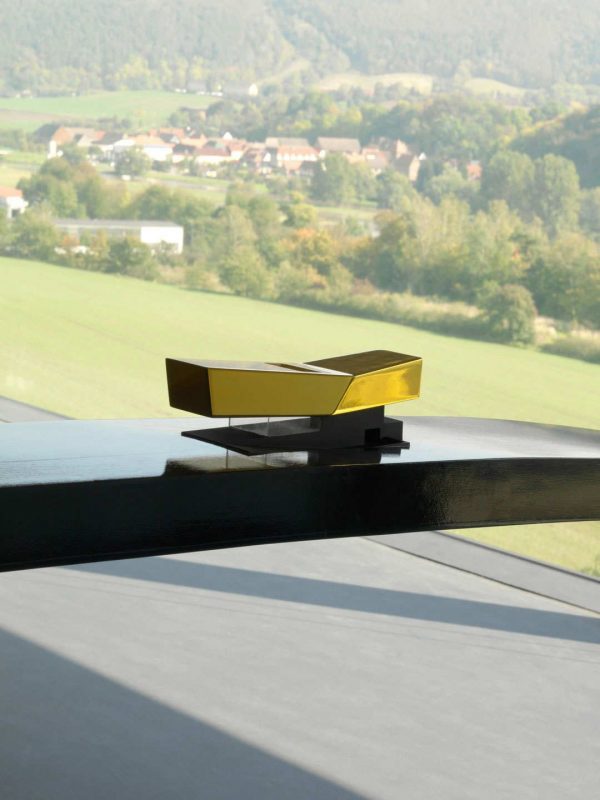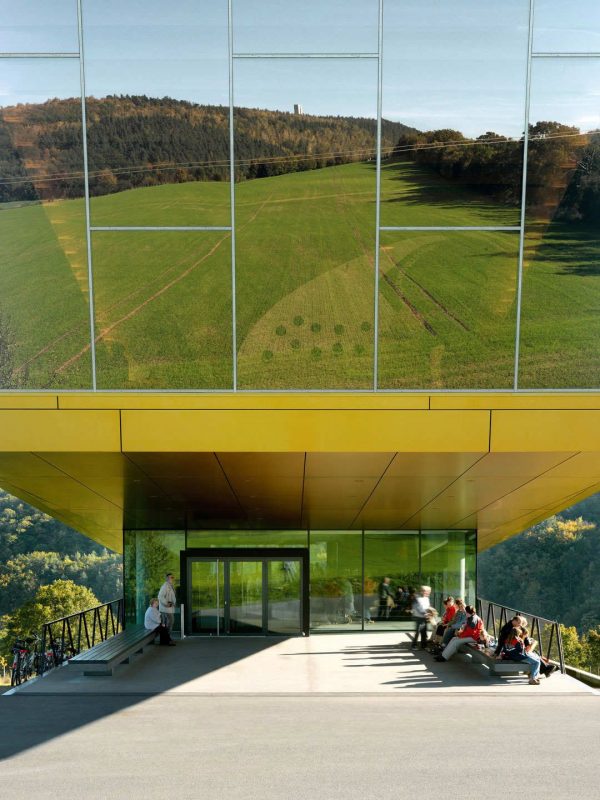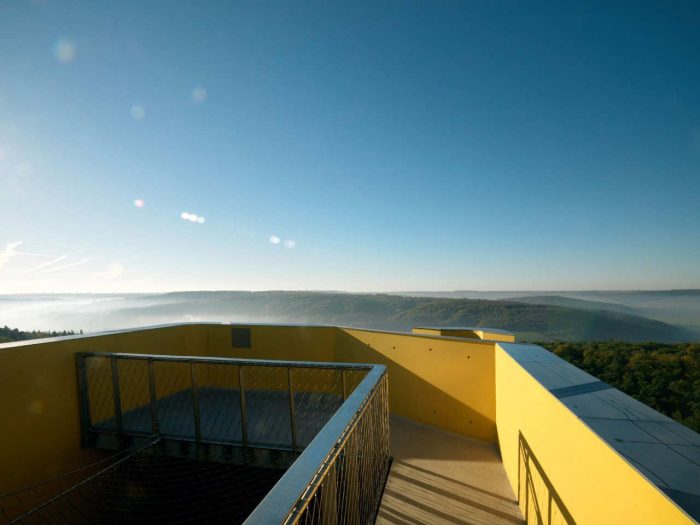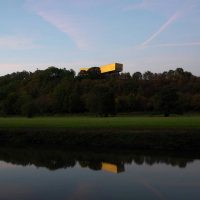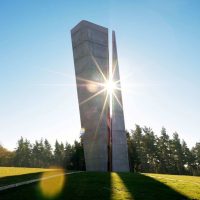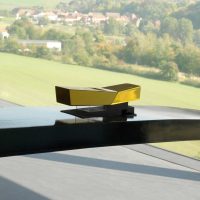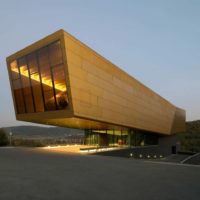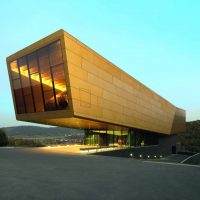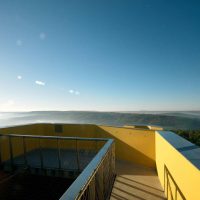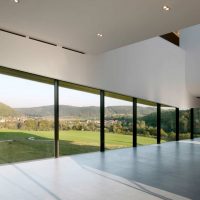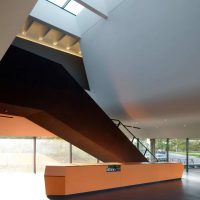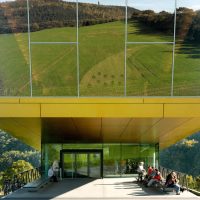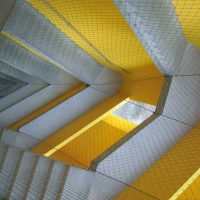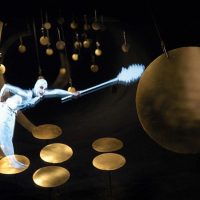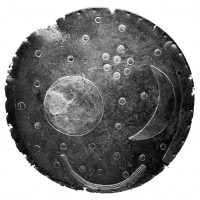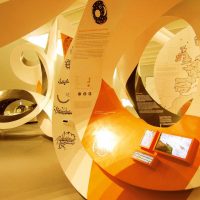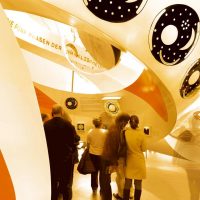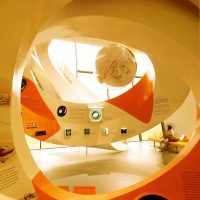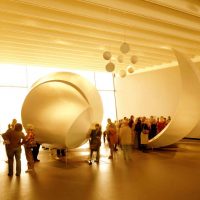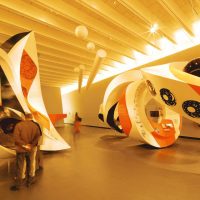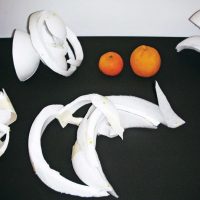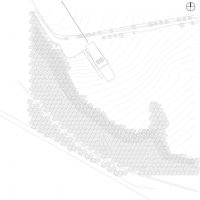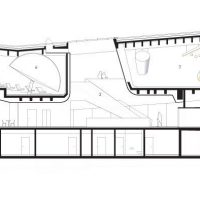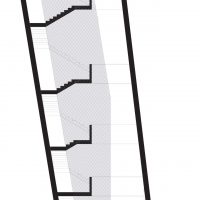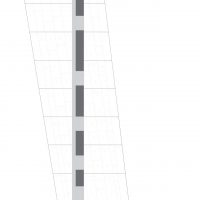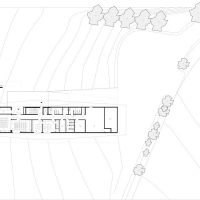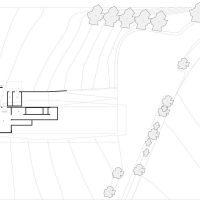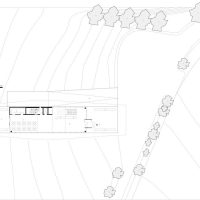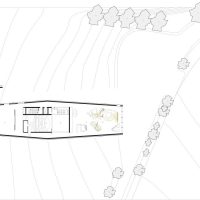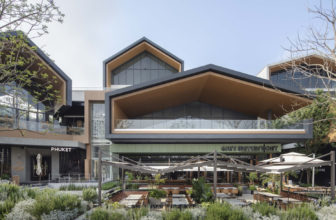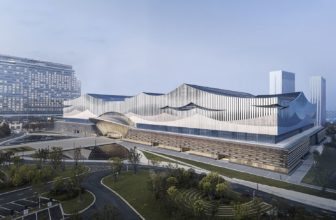It’s nice to see buildings of this sort and caliber. They remind us of the awe which architecture can induce. What is an architectural feature which impresses us humans more than a cantilever? Not height. Humans have evolved for thousands of years alongside trees of soaring heights. Not breadth. Wide isn’t hard to do, all you need is a lot of something. But a cantilever is impossible. Now of course it’s not really impossible, but for many purposes, it is. For a cantilever one must have some pretty strong fasteners, whatever they’re made out of, and a hell of a lot of stable mass to fasten to. And that kind of strength and stability is pretty modern. So humans aren’t used to the cantilever. There are no ancient texts or passed down folklore pertaining to cantilevers. It’s novel and it’s stunning.
Arche Nebra (Nebra Ark), designed by Holzer Kobler Architekturen is located in Wangen, Saxony-Anhalt, Germany and it is one big, or rather one big and one small, opposing cantilevers. The story is quite an interesting one, and so I will let the architects tell you the rest. Cheers.
In 1999, unlicensed treasure hunters unearthed a remarkable archaeological relic: a 3,600-year-old sky disc made of bronze inlaid with gold. It depicts complex constellations and the symbol of the solar barge representing the sun’s nightly passage from west to east. An architectural competition was launched to design a public archaeological centre and an observation tower that would showcase the disc and come to symbolize the region.
We chose the symbol of the solar barge for the construction of the centre. Visible from far away, the body of the building is covered with yellow anodized aluminium and appears to float above the glass-encased entry level, in which the admission desk and café are located. The 60-metre-long abstracted ship houses two exhibition rooms and the planetarium.
The open vertical atrium connecting the ground floor to the first floor symbolizes the relationship to the heavens. The rough plastered base housing the seminar rooms and offices appears to emerge from the hillside.
The permanent exhibition explores the site of the discovery and the historical environment, while the immense picture window surrounding it presents visitors with a vista of the Mittelberg mountain and the observation tower. The panoramic window of the temporary exhibition space offers a view of the Unstrut river.
The exact site where the disc was discovered is marked by a 30-metre-high conical tower, creating a landmark that can be seen from far around. Widening towards the top, inclined 10 degrees to the north and divided by a vertical crevice extending over its full height to mark the summer solstice, it replicates the function of the sky disc as a solar calendar. Once a day the sun passes through the vertical opening, indicating the line of sight towards the Brocken mountain some 80 kilometres away, just as the Brocken served as a reference point for the sky disc in the Bronze Age.
- photography by © Jan Bitter
- photography by © Jan Bitter
- photography by © Jan Bitter
- photography by © Jan Bitter
- photography by © Jan Bitter
- photography by © Jan Bitter
- photography by © Jan Bitter
- photography by © Jan Bitter
- photography by © Jan Bitter
- photography by © Jan Bitter
- photography by © Jan Bitter
- photography by © Jan Bitter
- photography by © Jan Bitter
- photography by © Jan Bitter
- photography by © Jan Bitter
- photography by © Jan Bitter
- photography by © Jan Bitter
- photography by © Jan Bitter
- site plan
- section 01
- section 02
- west elevation
- plan 01
- plan 02
- plan 03
- plan 04
Courtesy of Holzer Kobler Architekturen – Photographs: Jan Bitter


